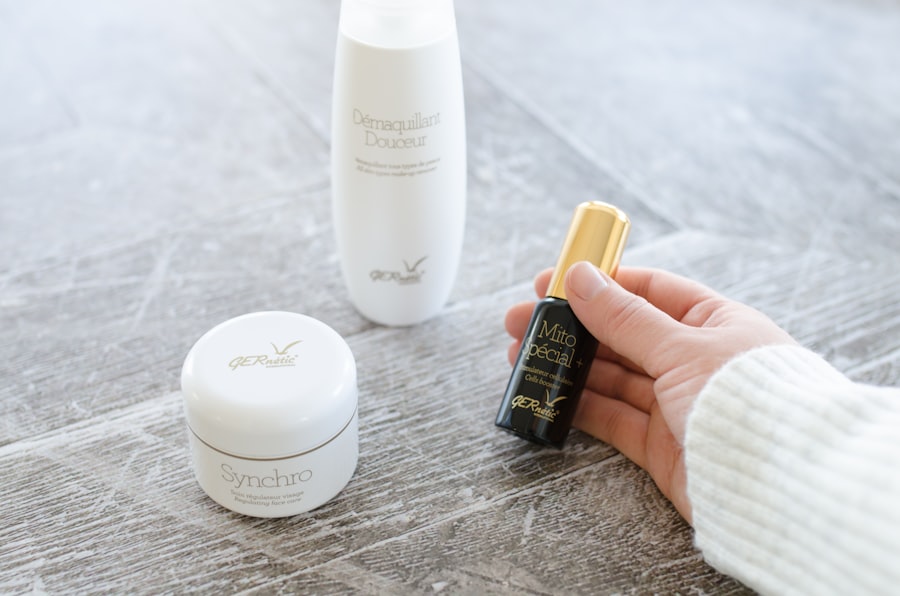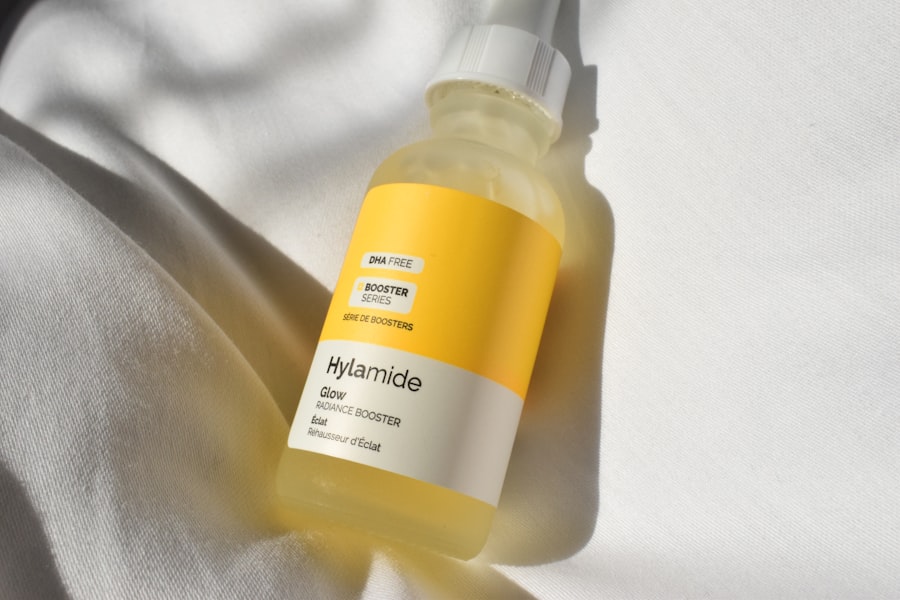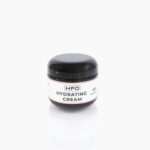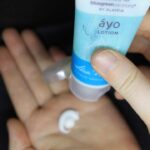After undergoing laser hair removal, you may find yourself feeling excited about the prospect of smooth, hair-free skin. However, it’s crucial to recognize that the care you provide your skin in the days and weeks following the procedure can significantly impact your results. Post-laser hair removal care is not merely an afterthought; it is an essential component of the overall treatment process.
By understanding the importance of this care, you can enhance your results and minimize any potential side effects. Your skin has just undergone a procedure that targets hair follicles with concentrated light energy, which can leave it sensitive and vulnerable. Proper aftercare helps to soothe your skin, reduce inflammation, and promote healing.
Neglecting this aspect can lead to complications such as irritation, pigmentation changes, or even infection. Therefore, taking the time to understand and implement effective post-laser care is vital for achieving the best possible outcome from your treatment.
Key Takeaways
- Proper post-laser hair removal care is crucial for achieving optimal results and preventing potential side effects.
- Managing discomfort and redness after laser hair removal can be done through the use of soothing creams and cold compresses.
- Protecting your skin from sun exposure is essential to prevent hyperpigmentation and other skin damage post-treatment.
- Moisturizing and hydrating your skin regularly can help to maintain its health and promote faster healing after laser hair removal.
- Avoiding certain activities and products, such as hot showers and harsh exfoliants, is important to prevent irritation and complications post-treatment.
Managing Discomfort and Redness After Laser Hair Removal
It’s common to experience some discomfort and redness immediately following your laser hair removal session. This reaction is typically mild and should subside within a few hours to a couple of days. However, managing this discomfort effectively can make a significant difference in your overall experience.
You might find that applying a cool compress to the treated area can provide immediate relief. This simple technique can help reduce swelling and soothe any irritation you may feel. In addition to cool compresses, over-the-counter pain relief medications can also be beneficial.
Non-steroidal anti-inflammatory drugs (NSAIDs) like ibuprofen can help alleviate discomfort and minimize inflammation. Always consult with your practitioner before taking any medication to ensure it’s appropriate for your situation. Remember that while some redness is normal, if you notice excessive swelling or prolonged discomfort, it’s essential to reach out to your provider for guidance.
Protecting Your Skin from Sun Exposure

One of the most critical aspects of post-laser hair removal care is protecting your skin from sun exposure. After treatment, your skin may be more sensitive to UV rays, making it crucial to take proactive measures to shield it from the sun. Direct sunlight can lead to pigmentation changes, which may result in dark spots or uneven skin tone.
To prevent this, consider wearing protective clothing or seeking shade whenever possible. In addition to physical barriers, applying a broad-spectrum sunscreen with an SPF of 30 or higher is essential. You should apply sunscreen generously to the treated area every two hours when outdoors, even on cloudy days. This practice not only protects your skin but also helps maintain the results of your laser hair removal treatment.
By prioritizing sun protection, you can ensure that your skin heals properly and remains radiant.
Moisturizing and Hydrating Your Skin
| Product | Moisturizing Score | Hydrating Score |
|---|---|---|
| Lotion A | 4.5 | 3.8 |
| Cream B | 4.8 | 4.2 |
| Serum C | 4.2 | 4.5 |
Keeping your skin moisturized and hydrated is another vital aspect of post-laser hair removal care. After the procedure, your skin may feel dry or tight, which can be uncomfortable. Using a gentle, fragrance-free moisturizer can help restore hydration and create a barrier that protects your skin from environmental irritants.
Look for products that contain soothing ingredients like aloe vera or hyaluronic acid, as these can provide additional relief. In addition to topical moisturizers, staying hydrated from within is equally important. Drinking plenty of water helps maintain your skin’s elasticity and overall health.
Aim for at least eight glasses of water a day, and consider incorporating hydrating foods into your diet, such as fruits and vegetables. By focusing on both external and internal hydration, you can support your skin’s recovery process and enhance its appearance.
Avoiding Certain Activities and Products
After laser hair removal, there are specific activities and products you should avoid to ensure optimal healing. For instance, strenuous exercise or activities that cause excessive sweating should be postponed for at least 24 hours post-treatment. Sweat can irritate the treated area and increase the risk of complications such as infection or inflammation.
Instead, opt for gentle activities like walking or stretching during this recovery period. Additionally, be cautious about the skincare products you use during this time.
Stick to gentle cleansers and soothing moisturizers until your skin has fully healed. By being mindful of both activities and products, you can create an environment conducive to healing and ensure that your results are long-lasting.
Following Proper Aftercare Instructions

Your practitioner will provide specific aftercare instructions tailored to your individual needs following laser hair removal. It’s essential to follow these guidelines closely to achieve the best results possible. These instructions may include recommendations on how often to cleanse the treated area, what types of products to use or avoid, and when to schedule follow-up appointments.
Taking the time to adhere to these instructions demonstrates your commitment to achieving optimal results from your treatment. If you have any questions or concerns about the aftercare process, don’t hesitate to reach out to your provider for clarification. They are there to support you and ensure that you have a smooth recovery experience.
Monitoring and Treating Any Potential Side Effects
While most individuals experience minimal side effects after laser hair removal, it’s essential to monitor your skin for any unusual reactions. Common side effects include temporary redness, swelling, or mild discomfort; however, if you notice persistent or severe symptoms such as blistering or excessive swelling, it’s crucial to seek medical advice promptly. Early intervention can prevent complications and ensure that any issues are addressed effectively.
If you do experience mild side effects like redness or swelling, there are several home remedies you can try for relief. Applying aloe vera gel or a cold compress can help soothe irritated skin. Additionally, over-the-counter hydrocortisone cream may reduce inflammation if recommended by your practitioner.
Always keep an open line of communication with your provider regarding any side effects you encounter; they can offer tailored advice based on your specific situation.
Scheduling Follow-Up Appointments and Maintenance Treatments
Finally, scheduling follow-up appointments and maintenance treatments is an integral part of achieving long-lasting results from laser hair removal. Depending on your hair growth cycle and the area treated, multiple sessions may be necessary for optimal results. Your practitioner will guide you on the appropriate timeline for follow-up treatments based on your individual needs.
Regular maintenance treatments not only help ensure that any remaining hair follicles are effectively targeted but also allow you to monitor the overall health of your skin post-treatment. Staying proactive about follow-up appointments demonstrates your commitment to maintaining smooth skin while also providing an opportunity for ongoing support from your practitioner. By prioritizing these appointments, you can enjoy the full benefits of laser hair removal for years to come.
In conclusion, post-laser hair removal care is a multifaceted process that requires attention and commitment on your part. By understanding its importance and following best practices for managing discomfort, protecting your skin from sun exposure, moisturizing effectively, avoiding certain activities and products, adhering to aftercare instructions, monitoring side effects, and scheduling follow-ups, you can maximize the benefits of your treatment while ensuring a smooth recovery process. Your dedication to proper aftercare will ultimately lead to beautiful results that you can enjoy with confidence.
After undergoing laser hair removal, it is crucial to follow proper aftercare instructions to ensure the best results. One related article that provides helpful tips for post-treatment care can be found here. This article discusses the importance of avoiding sun exposure, using gentle skincare products, and staying hydrated to promote healing and reduce the risk of complications. By following these guidelines, individuals can maintain smooth, hair-free skin for longer periods of time.
FAQs
What is laser hair removal?
Laser hair removal is a cosmetic procedure that uses a concentrated beam of light (laser) to remove unwanted hair. The laser targets the pigment in the hair follicles, damaging them and inhibiting future hair growth.
What are the aftercare instructions for laser hair removal?
After laser hair removal, it is important to avoid sun exposure and to use sunscreen with a high SPF to protect the treated area. It is also recommended to avoid hot showers, saunas, and strenuous exercise for 24-48 hours after the treatment. Additionally, it is important to keep the treated area clean and moisturized to promote healing.
How long do I need to wait before seeing results from laser hair removal?
Results from laser hair removal can vary depending on the individual and the area being treated. Typically, it takes 2-3 weeks to see the shedding of treated hair, and multiple sessions are usually required to achieve optimal results.
Are there any potential side effects of laser hair removal?
Some potential side effects of laser hair removal include redness, swelling, and mild discomfort in the treated area. In rare cases, blistering, scarring, or changes in skin pigmentation may occur. It is important to follow the aftercare instructions provided by the treatment provider to minimize the risk of side effects.
Can I shave or wax between laser hair removal sessions?
It is generally recommended to avoid shaving or waxing between laser hair removal sessions, as these methods can disrupt the hair growth cycle and interfere with the effectiveness of the treatment. However, it is important to follow the specific instructions provided by the treatment provider.





